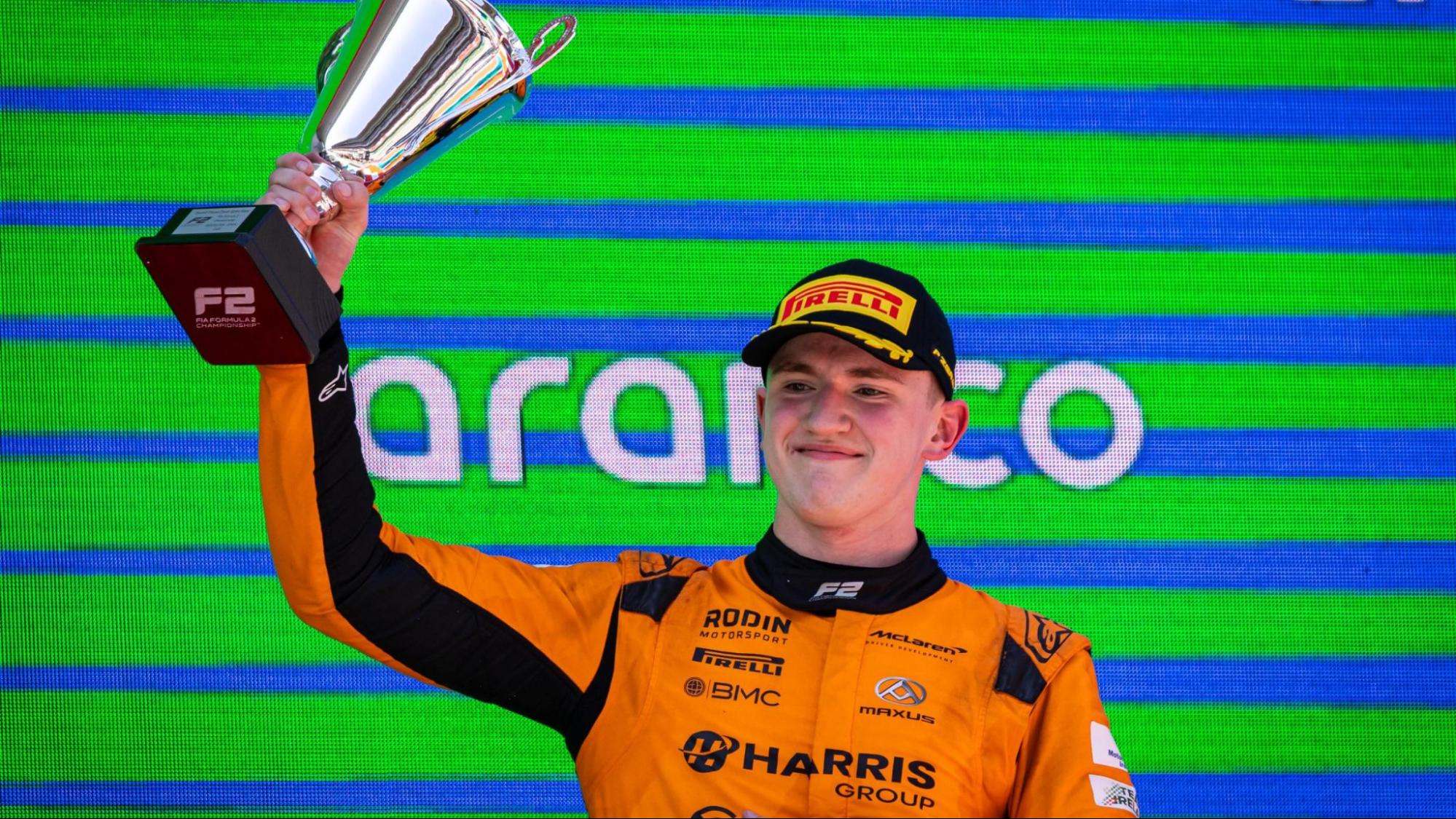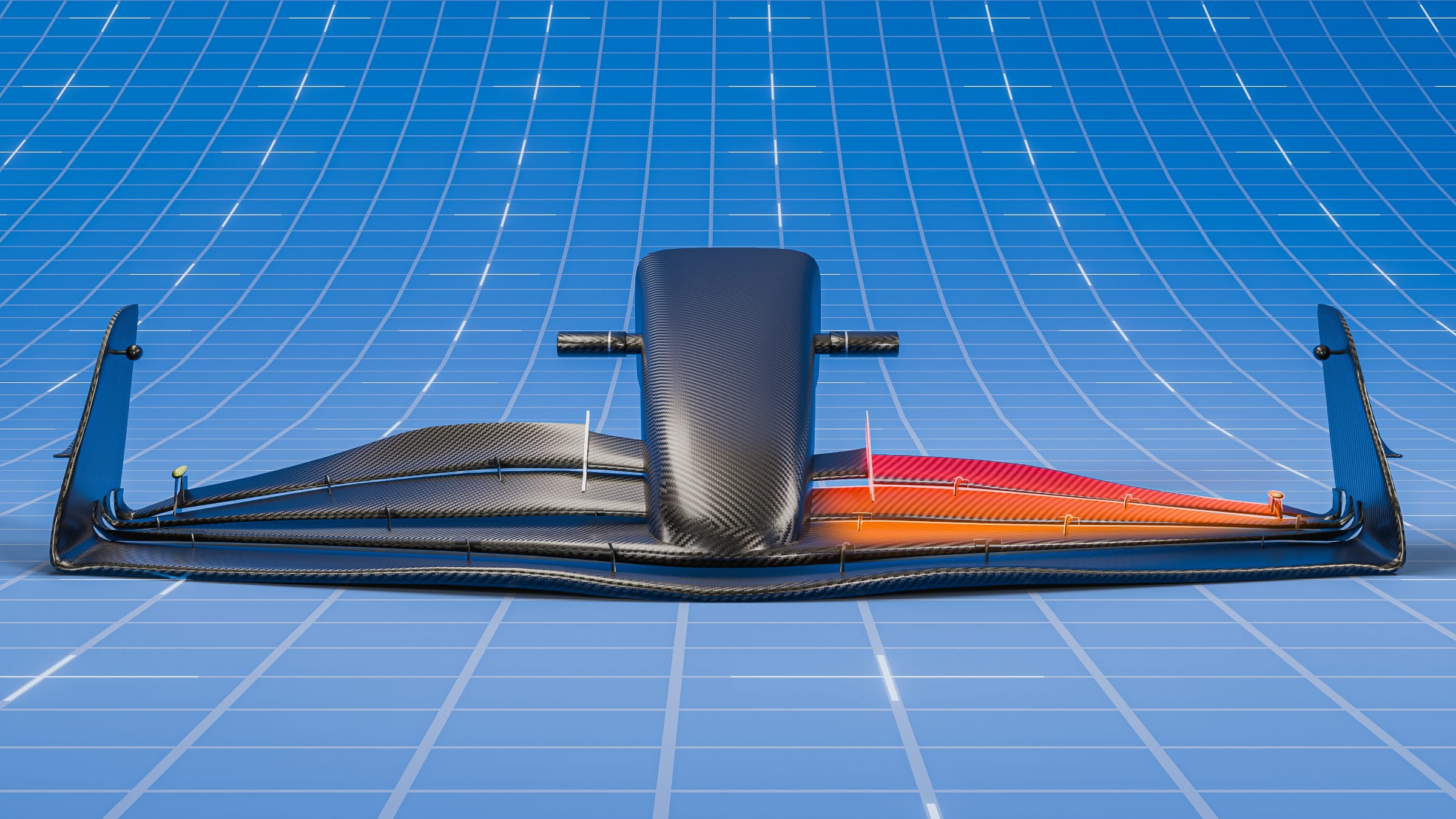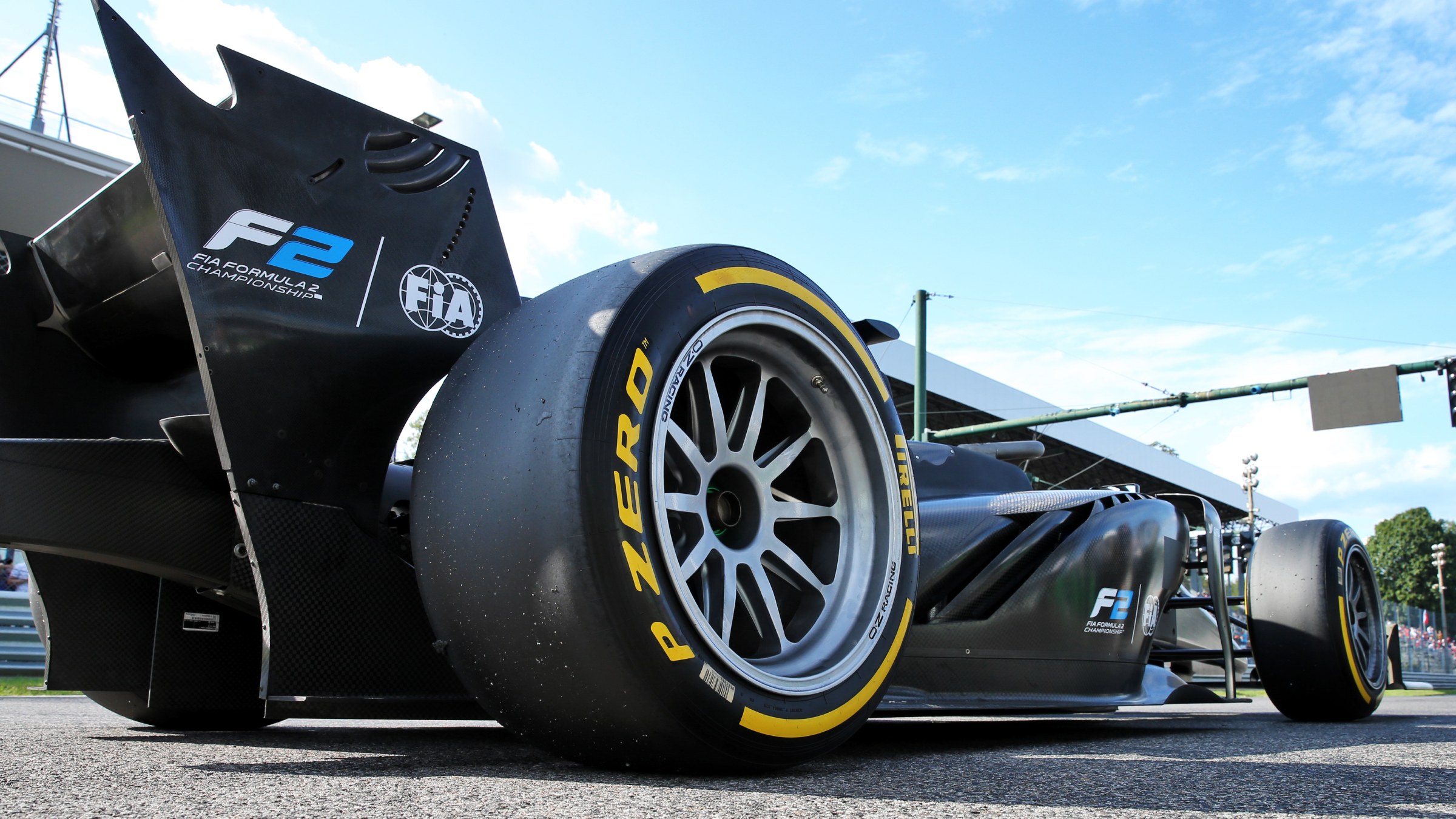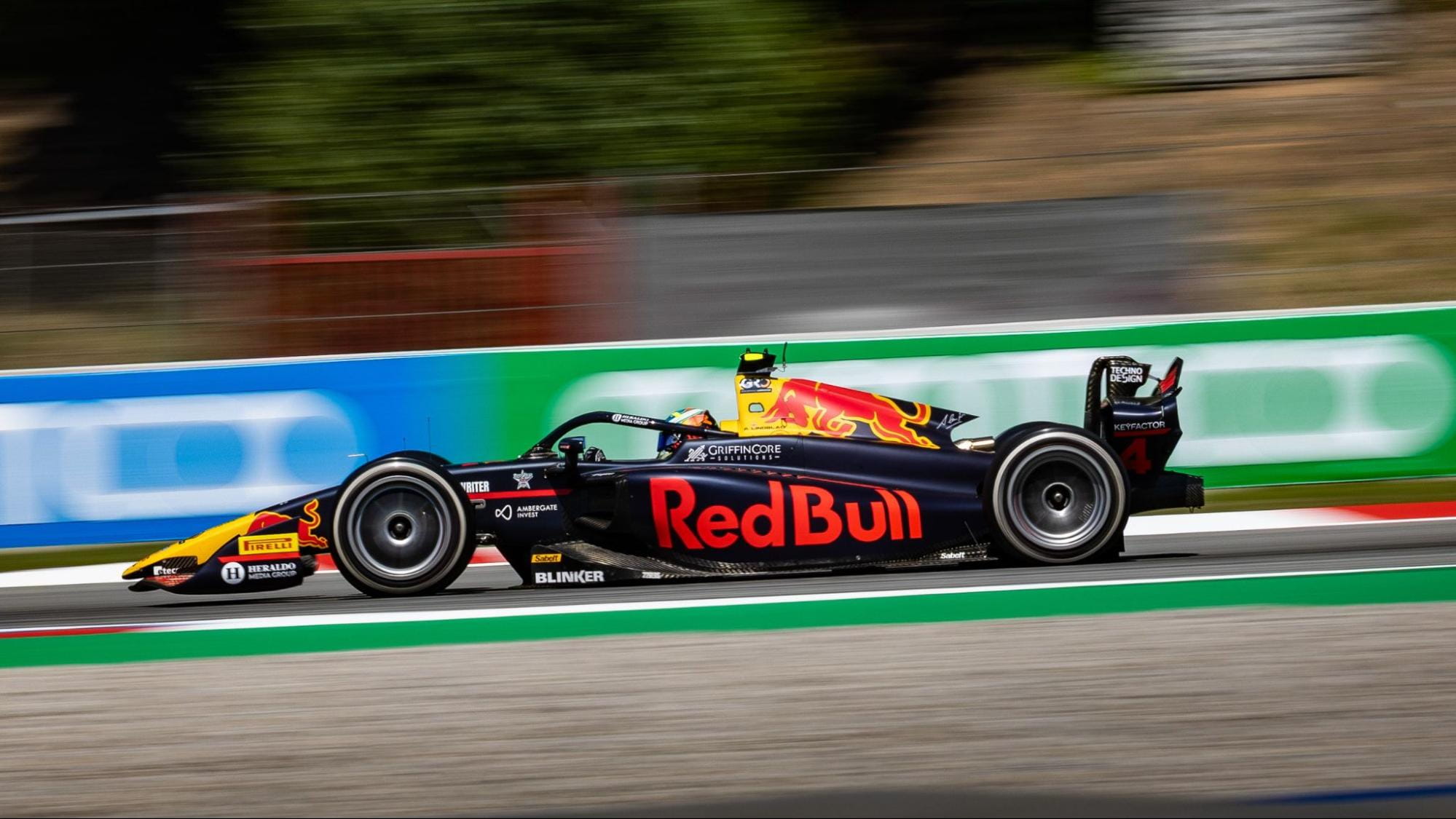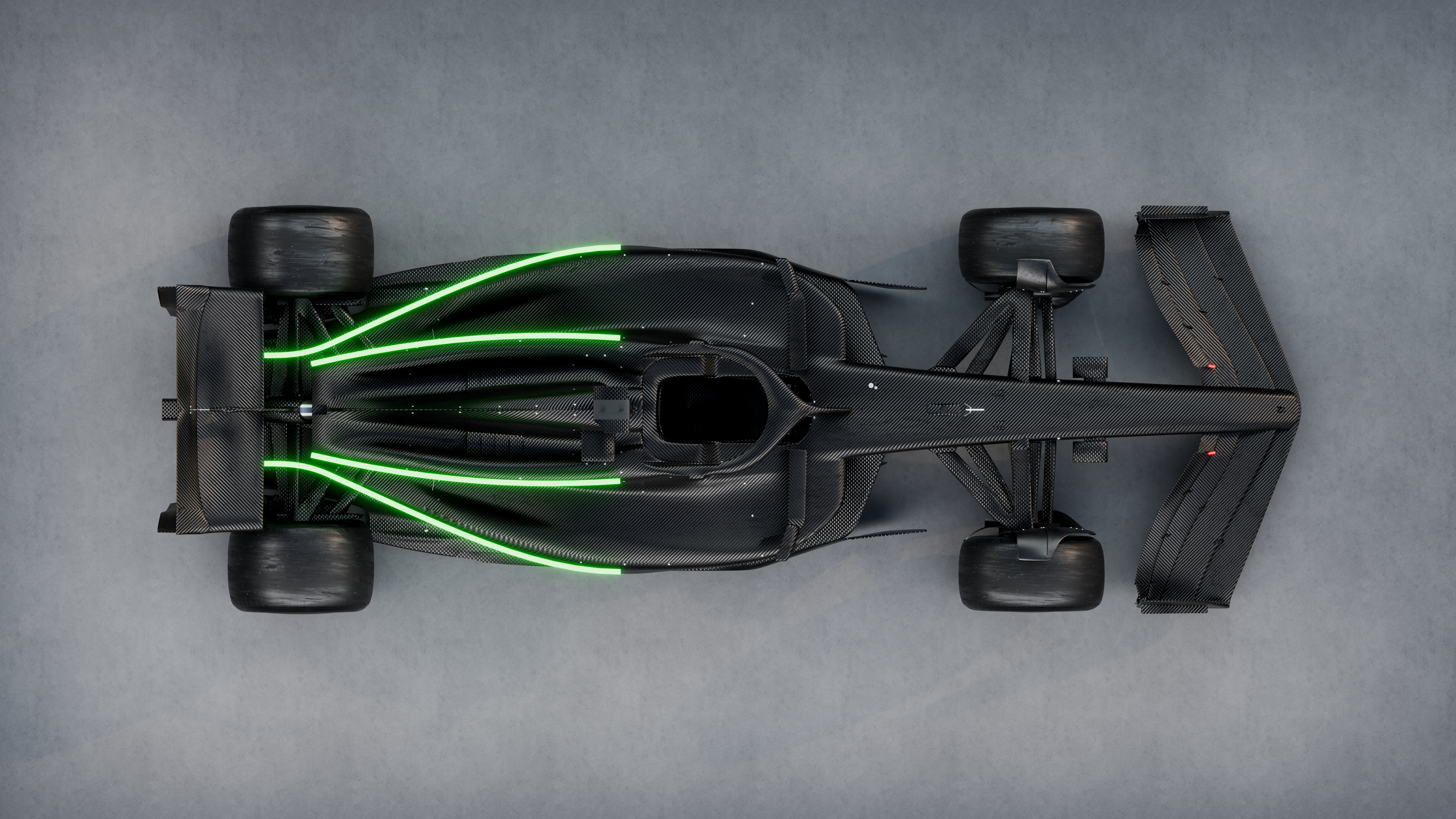Event
Alex Dunne’s Formula 2 disqualification sours impressive Formula 1 debut in Austria
by Josh Suttill
8min read

Fine margins decide every Formula 2 weekend and a knife-edge choice did exactly that for 19-year-old Rodin Motorsport driver Alex Dunne on the most important weekend of his career so far at the Austrian Grand Prix.
Dunne received a technical exclusion for one of the most common reasons found in Formula 1 or its support championships - excessive plank wear.
The same infringement cost Ferrari’s Lewis Hamilton points in the 2025 F1 Chinese Grand Prix earlier in 2025 and in Austria it stopped Dunne from taking home 18 points from his second-place finish in the feature race.
Raceteq has previously delved deep into the importance of the plank and why a part that is very rarely seen by the public can be the difference between points, podiums, wins, and disqualification.
The front plank thickness of Dunne’s car was found not to comply with that regulation, so he was given the automatic penalty of disqualification from the race.

An annotation of the Formula 2 plank showing its purpose and surrounding regulations
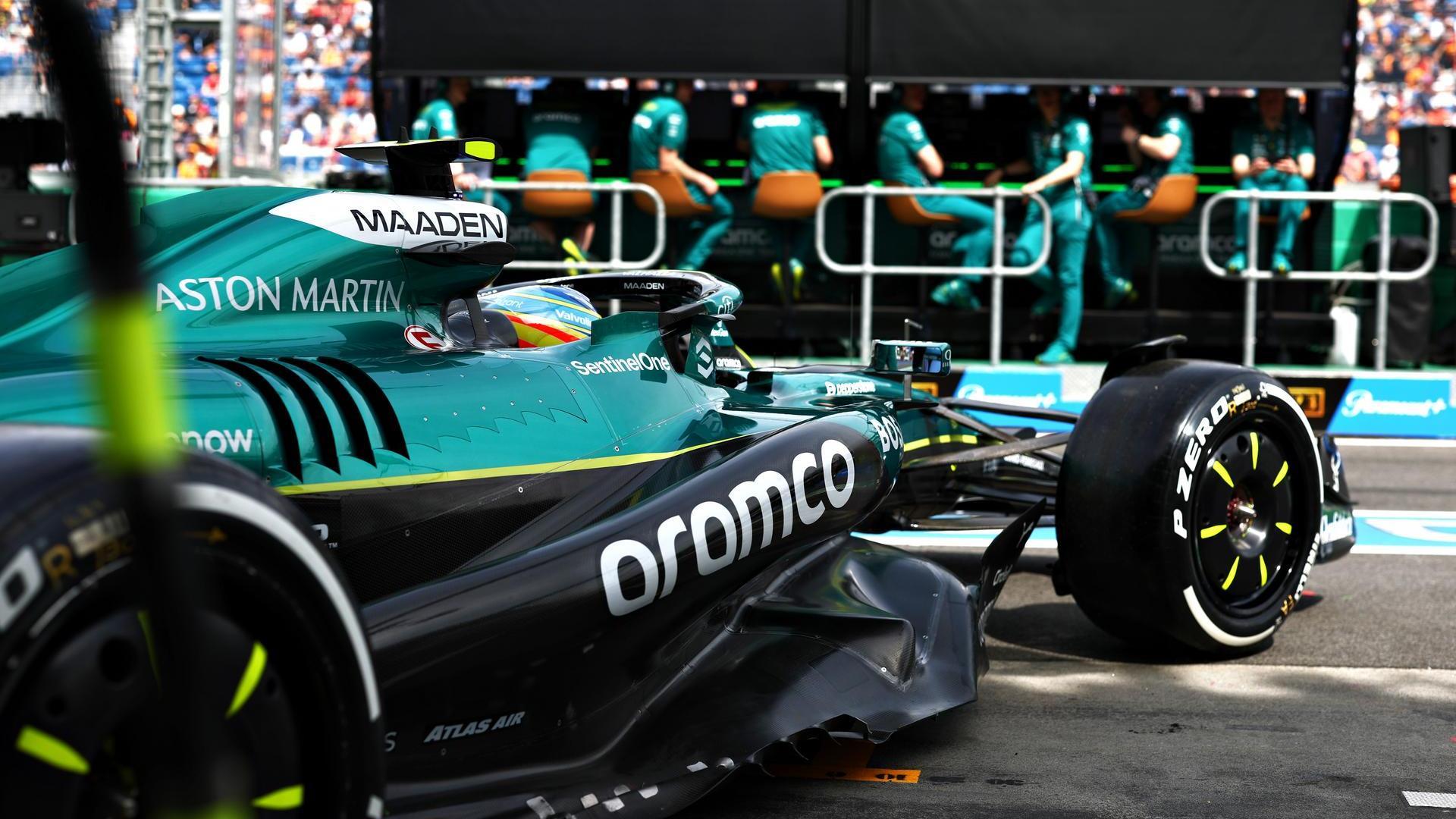
Sign up for a newsletter and we'll make sure you're fully up-to-date in the world of race technology
“In the hearing, the team acknowledged that the measurement performed by the FIA Technical Team was correct,” the stewards’ report said.
“The team explained that the front plank on (Dunne’s car) was new at the commencement. This was acknowledged by the technical delegate.
“The team [Rodin] said that they had measured the extent of wear on the front plank after the sprint race and it was nominal.
“They raised the height of the car before the feature race to allow for the additional fuel load.
“The team could not offer any explanation as to why the thickness of the plank assembly, when measured as prescribed in the technical regulations was below the minimum permitted thickness of 4mm at two of the three positions.”
The Red Bull Ring is a particularly punishing circuit for the underbody of the car, with aggressive kerbs around the circuit that can increase wear.
Dunne isn’t the first driver to lose a big result to such an infringement. MP Motorsport’s Richard Verschoor, the driver who beat Dunne to victory for first place, lost a sprint race victory at the Hungaroring for the same reason in 2024.
Disqualification aside, Dunne finished second at the chequered flag, but just missed out on first place in the F2 feature race at the Red Bull Ring, arguably because he was compromised two days prior by a monumental career milestone.
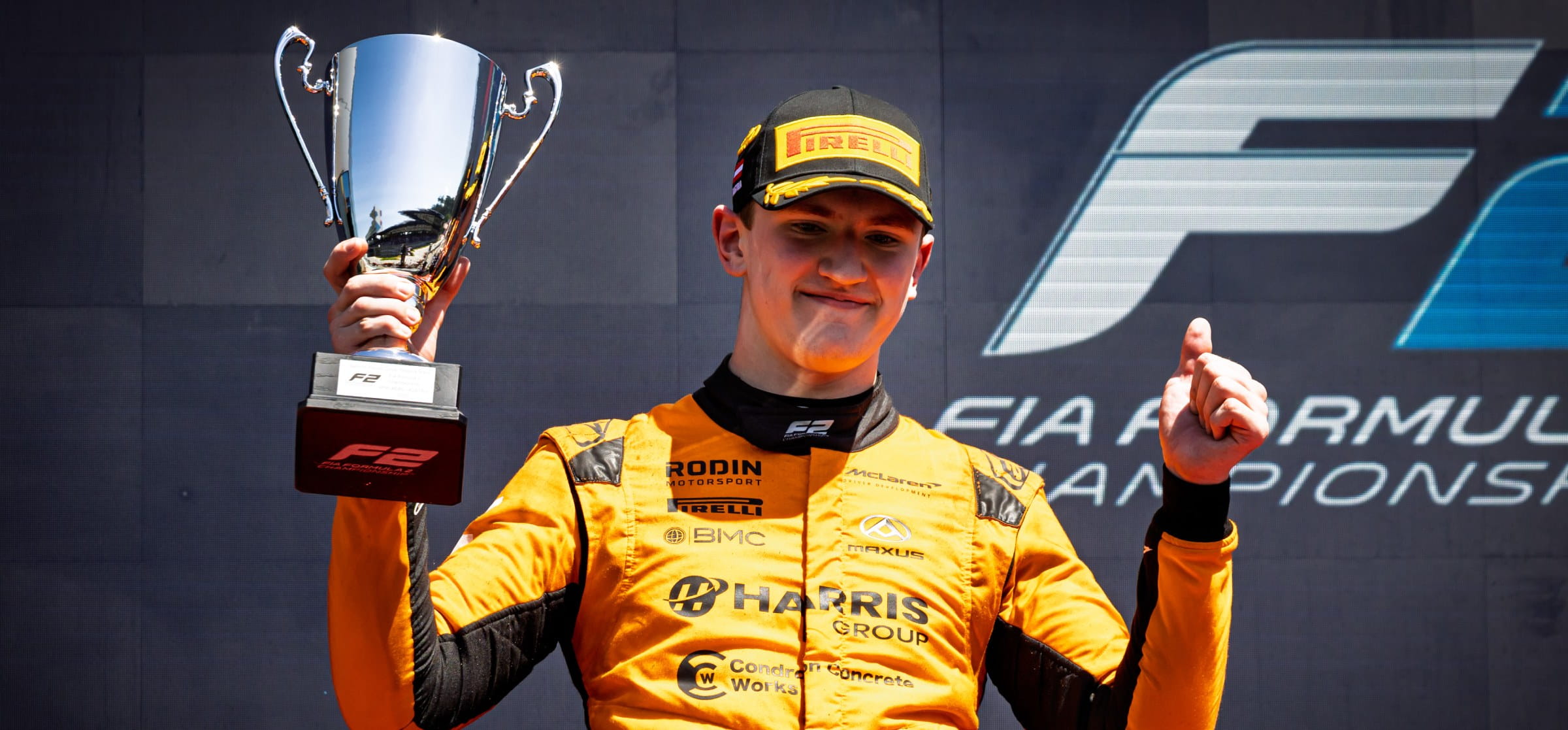
Dunne lost his second-place trophy due to the technical infringement at the Red Bull Ring
An adaptation struggle
McLaren handed its junior driver his maiden F1 practice outing at the Red Bull Ring on Friday, with Dunne leaving a great impression.
He lapped within a tenth of McLaren regular Oscar Piastri and impressed both McLaren and Lando Norris, whose car he borrowed for the session, with his execution and technical feedback.
But Dunne then had just over an hour after making his F1 practice bow to jump back into his Rodin-operated F2 car for the all-important 30-minute F2 qualifying session.
That’s no easy feat, particularly because it requires the driver to adapt back to machinery with less downforce and power.
Dunne ended up qualifying seventh in F2, only 0.214s adrift of pole position, but that was still his weakest qualifying result of his solid rookie season.

Dunne at the wheel of the McLaren F1 car in practice for the 2025 Austrian Grand Prix, with the MCL39 car carrying aero rakes for track testing
“To be honest, qualifying after FP1 was super difficult,” Dunne reflected on Sunday in Austria.
“I think jumping back into the F2 car was actually way harder than I expected.
“Especially if you look at the pace I had in free practice [where Dunne was fastest], then when I went back to qualifying I thought it was going to be alright, and, in the end, seventh was the best I could have done, to be honest.
“In terms of feeling with the car, I was just massively struggling after driving F1.”
Dunne found the biggest difference to be the step down in grip between the McLaren MCL39 and the Dallara F2 car.
“The jump from F2 to F1 is definitely much easier than it is to go back,” Dunne added.
“I think the biggest thing for me was getting used to the F2 car at high speed again.
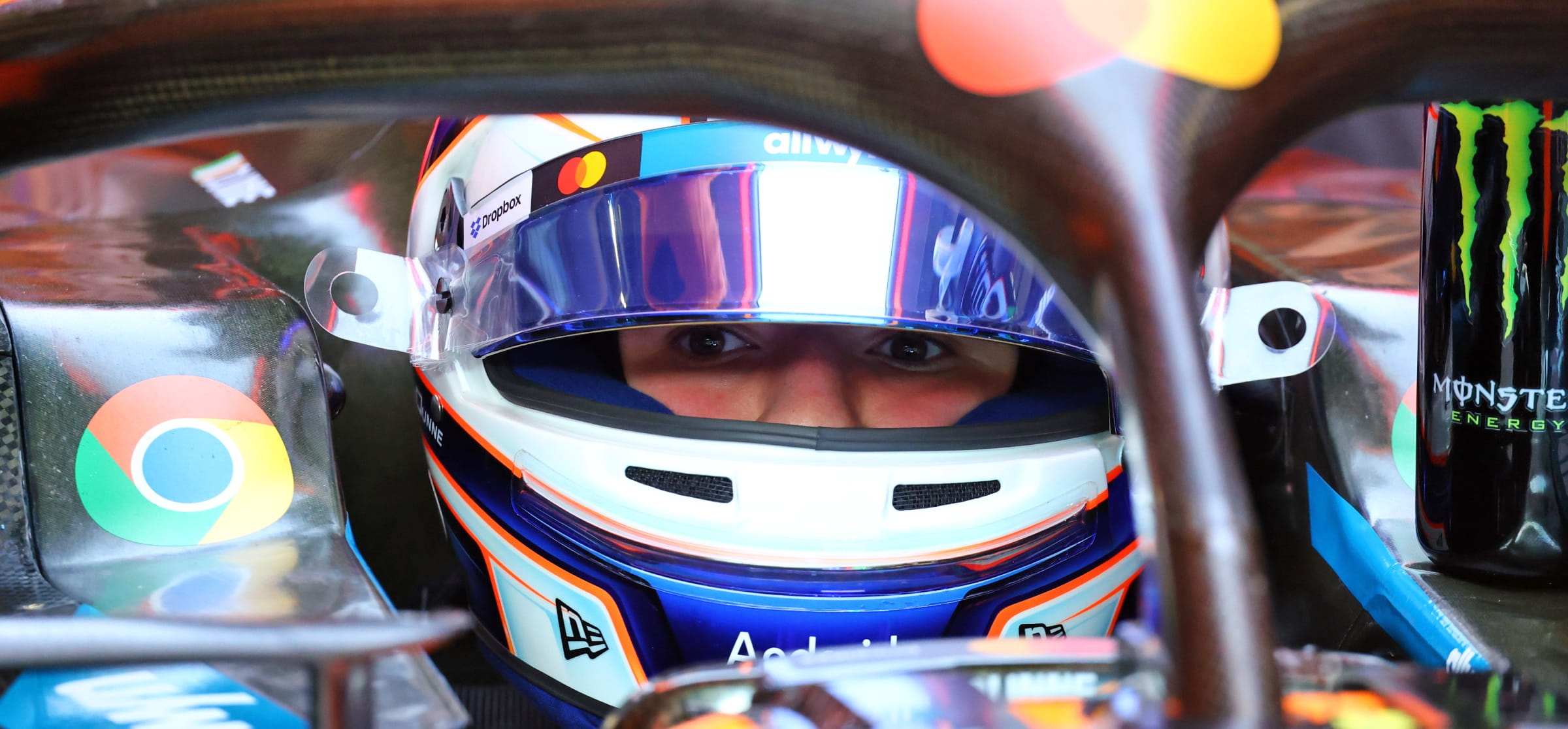
Dunne says he had to get used to the differences in grip and speed between the F1 and F2 cars
“The F1 car, especially the McLaren this year, obviously is a very strong car as well, which makes a difference. But I think jumping back into F2, in an F1 car, when you turn into the high-speed corners, it feels like you have an unlimited amount of grip.
“Every lap you can push and the car seems to always be able to take it. And I think on my first lap (of F2 qualifying) I kind of carried the approach of an F1 car into Turn 6 and I nearly spun.
“And I realised pretty quickly that you're going to have to rein it in. So, I think the biggest thing for me was the high speed. It was very difficult to get used to the lack of grip. And I think that's kind of (why) I struggled.
“The low-speed corners, all the heavy braking zones, were pretty okay straight away. But, it was more the last sector (where there are high-speed corners) where I was struggling a little bit.”
Dunne’s weekend was made trickier by jumping the start of the sprint race. That left him with a five-second penalty, but he made a decent recovery and benefitted from chaos elsewhere to pick up three points for a sixth-place finish.
His main title rival Verschoor finished fourth but was starting four places ahead of Dunne for the feature race, owing to his stronger qualifying effort.
That proved decisive in the feature race with Verschoor and Dunne demonstrating the standout pace, dispatching polesitter Leonardo Fornaroli and making it a two-horse race for victory.
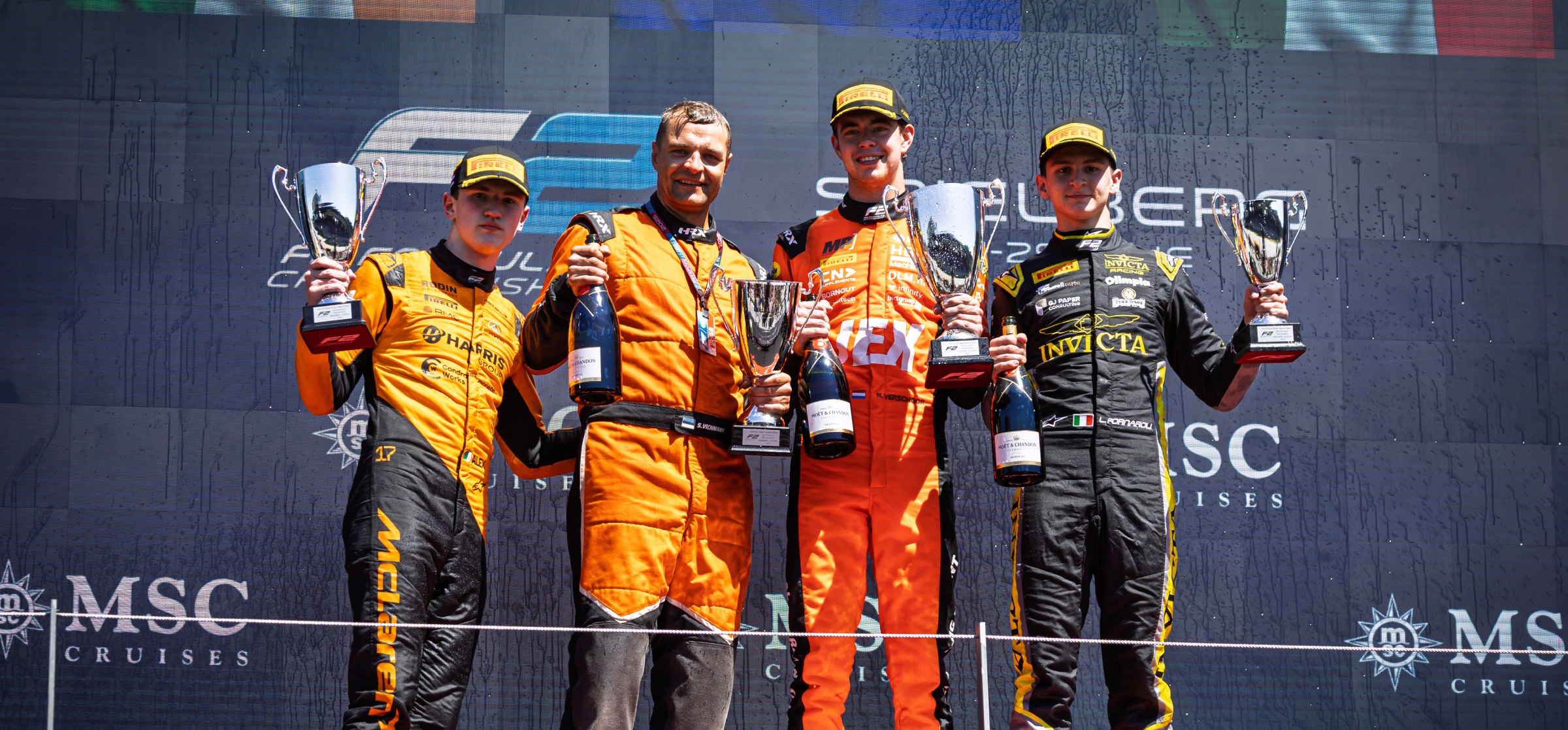
Dunne (L) on the F2 podium with Richard Verschoor (middle) and Leonardo Fornaroli (R)
“Alex definitely didn't make my life easy today, even though the gap maybe seemed big (it floated around two-three seconds for much of the race), but we both are going flat out and any mistake would give him any motivation to even push more,” Verschoor explained.
“So I tried to hang on, even though there was (tyre) graining quite a bit for me.”
Verschoor was able to hold his track position advantage, just keeping Dunne out of the DRS activation zone and converting the lead into a third victory of the season.
That was enough for Verschoor to wrestle the championship lead from Dunne and with Dunne’s disqualification, a six-point lead became a 24-point advantage.
Lessons learned
Dunne’s FP1 debut was so impressive, you’d have to imagine he’ll be in line for more F1 practice outings later this year, even if nothing is confirmed.
He says he’s learned what he can do differently to help minimise the impact on his qualifying results.
“The Friday generally it was quite a tiring day, to be honest,” Dunne said.
“I got straight out of FP1 and by the time I was back in the truck at Rodin, I had to get changed and jump straight back in the F2 car again.
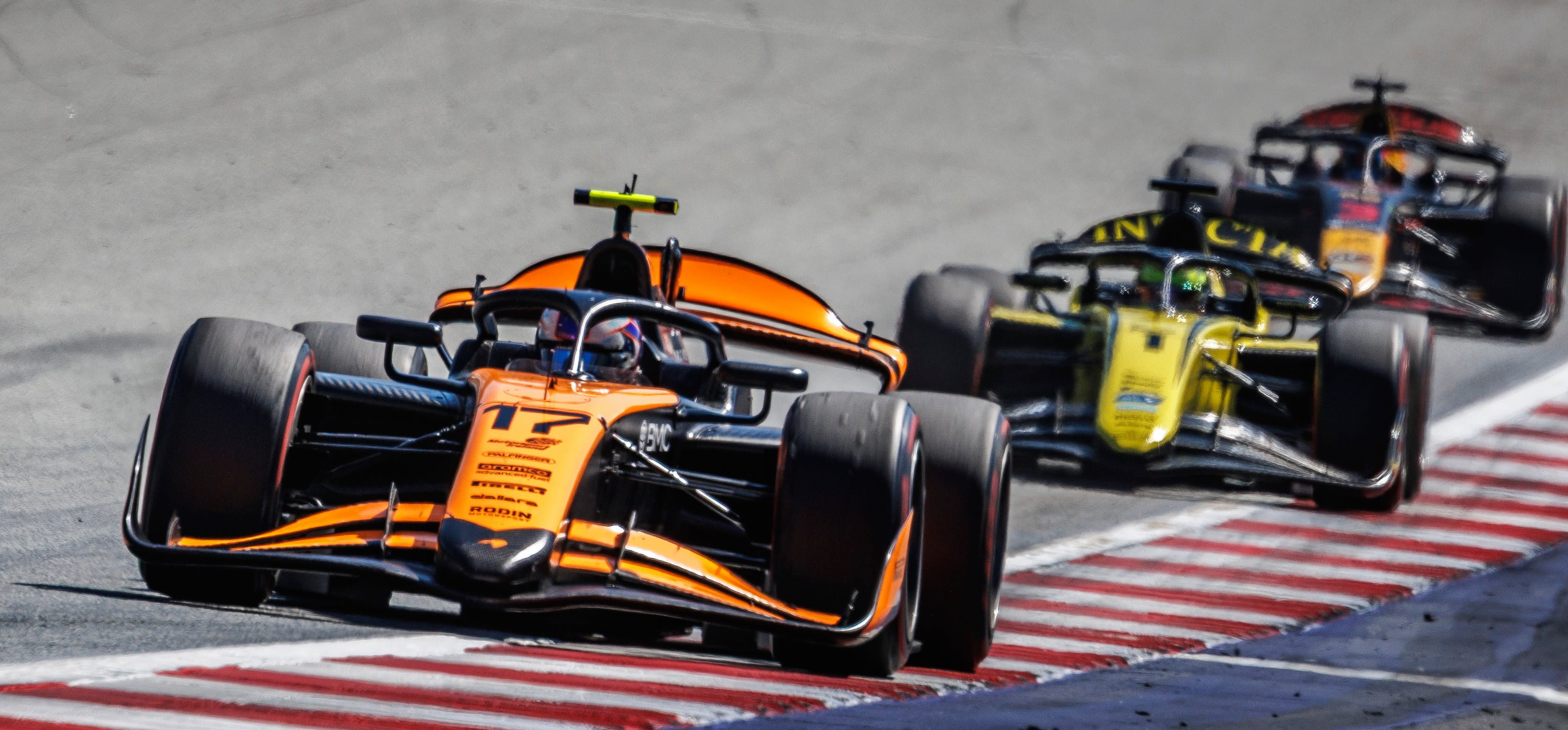
Dunne admitted he was “tired” at the wheel of the F2 car after driving in first practice at the 2025 Austrian F1 Grand Prix
“Think over the whole day I kind of just felt a little bit tired. It was relatively difficult to perform to the level I wanted to in qualifying.
“So, I think if I was to do it again, there are probably some things I would do differently to make it easier for myself both mentally and physically.
“Overall, it was still a very difficult experience. I'm happy that it went well and I think, regardless of the tricky qualifying, the result we had (on Sunday) was still very strong.
“So, I think I can be happy with it.”
